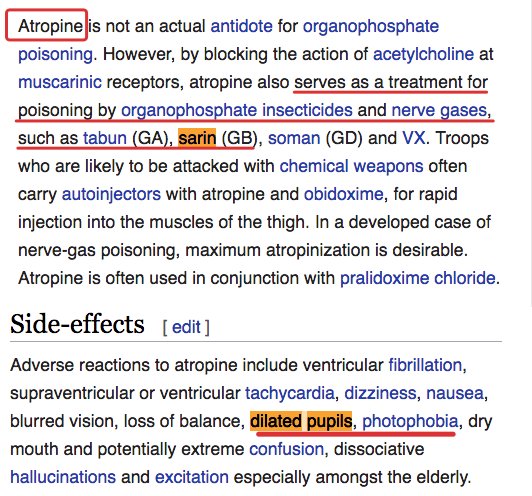

The pathogenesis of intoxication is based on the ability of atropine to bind mainly to muscarinic cholinergic receptors, moreover, although to a much lesser extent, atropine can bind to nicotinic cholinergic receptors, making them insensitive to the neurotransmitter acetylcholine. The reason for the poisoning can be a desire to get a drug rush. In fact, drugs with alkaloids are potent agents that require adherence to the dosing regimen and caution during storage. Such drugs are not uncommon, many of them are sold without a prescription, are considered natural and harmless, they can be found in almost any home medicine chest. Directly with an extract of the leaves and roots of these plants, candles, drops, tablets, tinctures are produced. In our zone it is belladonna, dope, henbane. Its predecessor, the even more active natural alkaloid hyoscyamine, is found in many poisonous plants of the nightshade family. The effect of toxic doses is explained by the ability of this substance to cause atropine delirium - a narcotic-like condition with impaired consciousness (hallucinations and delusions), which can even lead to death due to respiratory paralysis.Ītropine is chemically released from plant materials. Atropine poisoning occurs as a result of accidental or deliberate overdose of the substance. It is used in ophthalmology and psychiatry. Atropine is widely used in medicine alone in the form of sulphate and is part of many complex drugs - anti-asthma (Solutan, Franol), antispasmodics (Besalol, Spasmoveralgin) and some others.


 0 kommentar(er)
0 kommentar(er)
